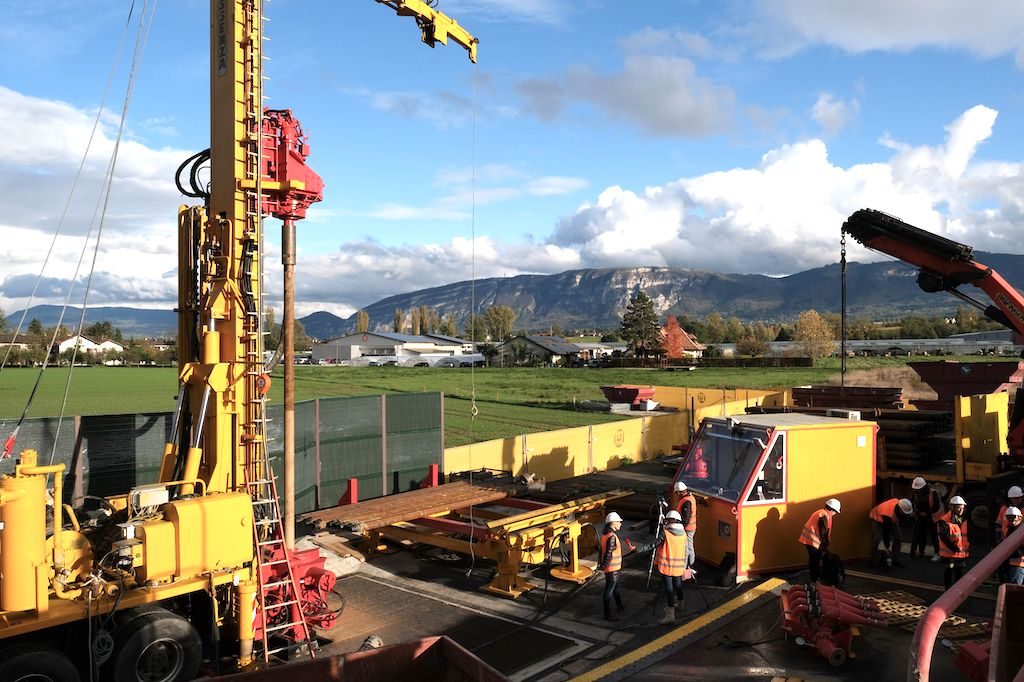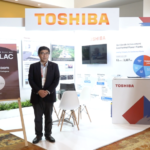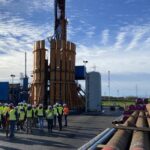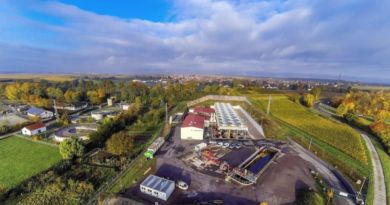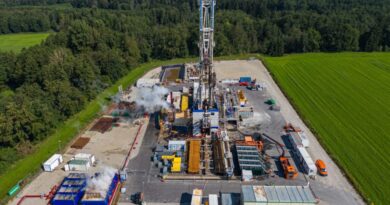Interview – Geothermal and geoscience research in Switzerland
Energy Disrupter
As part of wider geoscience research, the University of Geneva has been also been involved in geothermal research for Switzerland as we learn in this interview.
Among the nations signed on to the Paris Climate Agreement and committed to fight climate change, Switzerland as other countries has established its own path to achieve the objectives set. Switzerland sees itself at the forefront of implementing concrete measures to address the challenges presented by a changing climate.
In an interview shared with Swiss publication The Map Report, Prof. Andrea Moscariello of the University of Geneva in Switzerland provides a good overview on ongoing research work by his group in Switzerland. Professor Andrea Moscariello has been leading a research group on Geo-Energies at the Earth Science Department of the University of Geneva for the past 10 years after a long international career in the hydrocarbon industry.
Prof. Moscariello, for many years he has been interested in fundamental and applied research on topics related to geo-energies. Could you explain us what it deals with more precisely?
“My group’s research focuses mainly on the Geo-energies contained in sedimentary basins, in other words the geographical areas where most of the large human settlements are located and in whose subsoil most of the water is contained, and many of the energy and mineral resources, which are fundamental for society and industrial civilization. The issues we deal with include a wide range of topics that require approaches at different scales that aim to understand how these sedimentary basins form, fill, evolve over time and how and where they can contain energy resources (i.e. hydrocarbons, geothermal energy and water) “.
How does your research work in the context of energy challenges and global warming?
“The current energy challenges faced by our research group make this subject an exciting work area that requires a multidisciplinary approach and the intelligent use of all kinds of classical and more advanced analytical methods and techniques. We have numerous geothermal support projects underway, these are carried out starting from in-depth studies both on the ground and in the laboratory to get to use sophisticated 3-dimensional geo-modeling tools aimed at quantitatively describing the rocks of the deep subsoil, their processes genetic and transformation over time and to simulate the fluids that flow through them. Nevertheless, without the extraordinary help of public and private organizations, all these fundamental and applied research activities would not be possible”.
We clearly deduce that in Switzerland there is a concrete commitment on the part of the public and private sector to find concrete measures towards a zero CO2 emission goal.
“Fundamental and applied research have always been considered priority activities for Switzerland, which has always excelled in technological innovation.
The importance of cutting-edge scientific research is confirmed by the fundamental Federal support, once again demonstrated by the recent budget approved by the Swiss parliament for the four-year period 2021-2024 of CHF4.6 billion, dedicated exclusively to scientific research. Part of this funding will certainly be dedicated to the energy and climate challenges of the coming years. At the same time, the Confederation has implemented very concrete measures to incentivize the search for deep geothermal sources that will make it possible to replace in the medium and long term the current use of hydrocarbons, non-renewable fossil energies, for the production of heat and energy. electric. A substantial example is given by the CO2 law.”
In this favorable context both for research and innovation and for industrial activities aimed at geothermal research, what is being done in Switzerland?
“In the last 5 years we have seen a great number of cantonal and national initiatives aimed at the formation of virtual centers of competence that have made it possible to establish fruitful collaborations between academia and industry to enhance new data and information. This collaboration and integration made it possible to better understand the subsoil and reduce the risk associated with drilling deep wells. At the cantonal level, since 2014 the Canton of Geneva and their industrial energy services (SIG), with which my research group has been collaborating for years, has shown clear leadership in promoting geothermal research by continuing to invest a lot of financial resources, including thanks to federal aid, and with very encouraging results.
After the induced seismic events following the geothermal wells of Basel in 2006 and St. Gallen in 2012 and the discovery of methane gas in the latter, the exploration of deep geothermal resources seemed to have no future. From what he describes, however, it does not seem to be so
“The events in Basel and St. Gallen certainly had a negative impact on public perception and generated a certain mistrust of these very profound projects. The great resistance that part of the public is demonstrating to the Haute Sorne project in the Jura is certainly also linked to these negative experiences. The drilling of deep wells certainly involves risks but modern technologies, especially those developed in the oil industry, allow to mitigate and reduce these risks both in the design phase and in the execution phase of the well. On the other hand, after the Basel event, the excellent work of raising awareness and education of the population carried out by the City of St. Gallen has made it possible to have a much higher level of acceptance for the induced earthquake of 2012 than that which occurred in Basel. The negative surprise in St. Gallen was actually the unexpected discovery of methane gas .”
Based on the events described and the possible presence of hydrocarbons underground, do you think that exploration of deep geothermal energy will ever resume in Switzerland?
“Our research has ascertained that gas accumulations exist throughout the Swiss plateau but in all cases we have studied, they are very small volumes that can be managed with the necessary and well-known technological devices. Therefore, these accumulations must in no way block the search for alternative energy sources such as geothermal energy. In this regard, the current well of St. Gallen, about 4200 m deep and currently still accessible, but with the risk of being definitively cemented and abandoned, risks becoming a symbol of the inability to know how to manage the resources offered to us from the subsoil and a example of negative public investment. This well, on the other hand, represents an extraordinary opportunity to demonstrate to the public that despite the geological uncertainties and unforeseen events.”
Source: The Map Report


